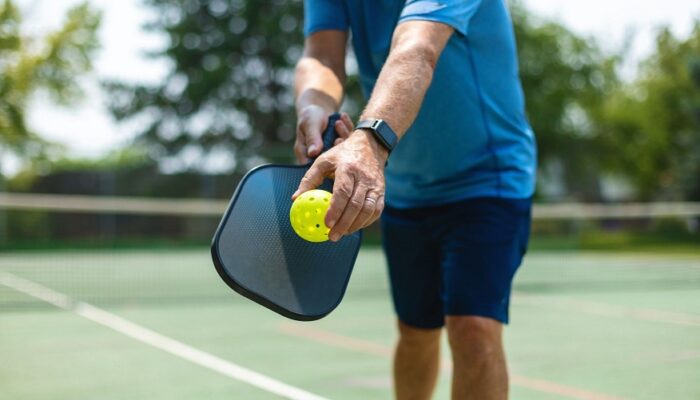
Introduction
Pickleball, the fast-growing sport that combines elements of tennis, badminton, and table tennis, is known for its dynamic and exciting gameplay. While singles play is popular, doubles in pickleball is a unique and engaging experience. The success of a doubles team in pickleball doesn’t solely depend on individual skills but heavily relies on the coordination, communication, and synergy between the two players. In this article, we will delve into the world of double team dynamics in pickleball, exploring the strategies, communication, and teamwork that make for a winning combination on the court.
Understanding the Roles
In pickleball doubles, each player on a team has a specific role to play, and understanding these roles is crucial. Typically, one player takes on the role of the “forecourt” player, while the other plays in the “backcourt.” The forecourt player is responsible for covering the non-volley zone, also known as the “kitchen.” Their role is to maintain control at the net, engage in quick exchanges at the non-volley line, and set up opportunities for the backcourt player.
Conversely, the backcourt player is tasked with guarding the baseline, returning deep shots, and providing support for the forecourt player. The synergy between these two roles is essential, as they need to complement each other’s strengths and cover each other’s weaknesses effectively. Successful teams ensure that they play to their strengths, whether it’s their agility at the net, powerful smashes from the baseline, or strategic shot placement.
Effective Communication
Communication is the backbone of any successful doubles team. In pickleball, it’s vital to establish clear and concise signals and understandings with your partner. Effective communication ensures that both players are on the same page, making split-second decisions to outmaneuver opponents. Some key aspects of communication in pickleball doubles include:
Read More: PES 2020 – What is the best training?
Call Shots
To avoid confusion and collisions, players should communicate loudly and clearly who will take each shot. Common terms include “mine” and “yours” to indicate ownership of a ball.
Positioning
Regularly updating your partner on your position and intentions is essential. Let them know if you plan to move to the net or fall back to the baseline.
Strategy
Discuss and adapt your game plan based on your opponents’ strengths and weaknesses. Adjusting your tactics as a team can provide a significant advantage.
Encouragement
Positive reinforcement and support for your partner can boost morale and confidence, leading to better performance on the court.
Synergy and Anticipation
The true magic of pickleball doubles lies in the synergy between partners. A well-coordinated team can anticipate each other’s movements and actions, leading to fluid and efficient gameplay. Synergy often comes from practice and experience, but there are key elements that contribute to it:
Understanding Timing
Anticipating your partner’s shots and movements is critical. Knowing when they will hit the ball and where they will move next can make a significant difference.
Covering the Court:
Effective coverage means that there are no gaps or weaknesses in your court. For example, if your partner rushes to the net, you should be prepared to cover the baseline.
Reaction Time:
Quick reflexes are vital in pickleball. The ability to react swiftly to your partner’s shots and opponents’ returns is a skill that can be honed through practice.
Consistency:
Synergy also relies on consistency in your play. If your partner can predict your shots and reactions, it makes for a much more synchronized and efficient game.
Strategies for Success
While effective communication and synergy are fundamental, having a game plan and strategy is equally important. A successful doubles team should have a few strategies up their sleeves, ready to adapt to different opponents and situations:
Aggressive vs. Defensive
Decide whether your team will play an aggressive, offensive style or a more defensive one. This can depend on your strengths and the opponents you’re facing.
Targeting Weaknesses
Identify your opponents’ weaknesses, such as backhand shots or slow movement, and focus on exploiting them.
Switching Positions
Be flexible in your positioning, as it can catch opponents off guard. For example, having the backcourt player occasionally move to the net can be a tactical advantage.
Lob Shots
Strategic lob shots can disrupt your opponents’ rhythm and provide opportunities for put-away shots.
Conclusion
In the world of pickleball doubles, it’s not just about individual skills; it’s about the dynamic partnership between two players. Effective communication, synergy, and well-thought-out strategies are the cornerstones of success. As you and your partner spend more time on the court, honing your skills and understanding each other’s tendencies, your performance as a doubles team will undoubtedly improve. Remember, in pickleball doubles, the whole is greater than the sum of its parts. So, get out on the court, work together, and enjoy the exciting world of pickleball doubles.
